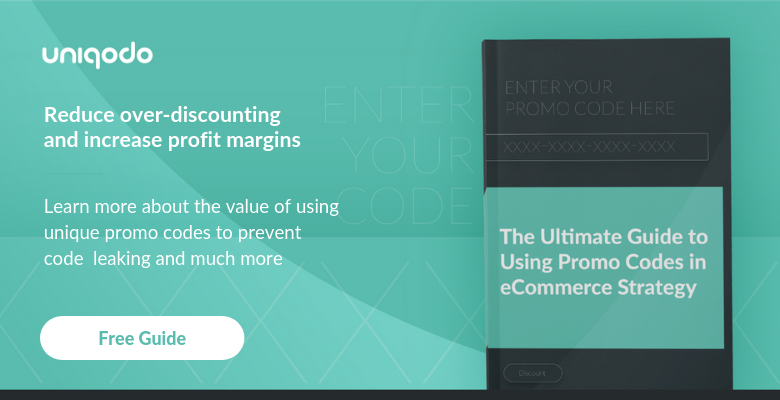Online marketing in 2019 is more complicated than ever. A basic web presence is no longer enough to create conversions, and companies are considering ever-more creative ways to increase sales. Marketing campaigns must now incorporate everything from content marketing to social media, and methods like affiliate marketing are quickly becoming a business necessity.
Around 15% of digital media advertising revenue currently comes from affiliate efforts, and 81% of marketers now leverage the power of an affiliate marketing program as a result. Statistics also suggest that affiliate marketing is on the rise, with interest growing by 44% between 2017-18 alone.
The power of affiliate marketing is only likely to increase as the internet and, more specifically, mobile use continues to gain momentum. To make sure you can keep up with this growing trend, we’re going to talk you step-by-step through a few ways to create a successful affiliate marketing campaign in 2019 and beyond.
Step 1: Understand affiliate marketing
Anyone who’s already taken the time to understand influencer marketing should find affiliate campaigns fairly easy to understand. The idea is basically to outsource some of your marketing to a third-party, and share in the rewards. By working with an affiliate partner either directly or through an affiliate network, a wide range of businesses use this technique to attract new clients.
Affiliate campaigns typically lead consumers to landing pages using a range of techniques, including single-use promotion codes, banners, and email. Unlike more expensive upfront marketing efforts, affiliate links revolve around the concept of revenue sharing, thus guaranteeing your ROI.
Retailers currently enjoy the most notable affiliate marketing returns, but less-obvious industries like health and beauty are also benefiting from efforts here, and they’re doing so by using techniques that include:
-
Bloggers: 77% of internet users read blogs, so reaching out to affiliate bloggers is always worthwhile. Much like influencer marketing, success here involves sending a unique promotion code to a blogger who can share it with their audience. This is beneficial as bloggers provide a personal recommendation that can work wonders for driving traffic. Blog posts also tend to use keywords and unique content that naturally ranks well in search engines.
-
Coupon sites: 31 billion eCoupons have been redeemed worldwide in 2019, so it shouldn’t be surprising that coupon sites also deserve your affiliate attention. By supplying unique single-use codes to sites like these, you can monopolise an existing audience without falling foul to code misuse. Even better, the need for specific search terms means you can guarantee that the leads you create here are more liable to convert.
-
Review sites: Product reviews are always helpful for creating conversions as they prove what your products can do. As such, finding affiliate partners in review sites makes sense. Affiliates like these will typically require a sample of your products, as well as a unique code for readers. The downside is that you may find your product’s pitted against competitors. The good news is that review sites always organically rank highly on search engines.
While these are some of the most common affiliate connections we make, they certainly aren’t the only options. Other popular affiliate methods include email marketing and PPC campaigns, either of which stands to offer various business benefits, including:
-
Performance-based results
-
Access to a new audience
-
Rapidly scaling traffic
-
Increase in search rankings
Step 2: Finding an affiliate traffic source
Spreading your affiliate efforts too thinly over a wide range of traffic sources is no way to find your target audience. Instead, affiliate managers need to develop focused strategies that are guaranteed to hit the mark. In other words, you’re far better off doing a few affiliate techniques well than trying to get them all under your belt.
In general terms, the leading affiliate traffic sources at the moment include:
-
Pay-per-click advertising
-
Social media advertising
-
SEO strategy
-
Contextual advertising
-
Email marketing
The best choice for your business primarily comes down to which technique stands to direct clicks from the right people. If you’re aiming for personalised offerings, for example, social media or email marketing is best. By comparison, an SEO strategy can help you to create broader but less personalised conversions.
Step 3: Incorporate single-use codes into your planning
Single-use promo codes always benefits business efforts, and your affiliate campaign is no exception. That's hardly surprising considering that 49% of consumers prefer personalised promotions. Wide-spread, impersonal affiliate codes can turn-off customers. They can also lead to both code misuse and affiliate efforts that you can't track. This could cost you money, and prevent you from tailoring affiliate campaigns as you move forward.
Single-use, personalised codes, allow you to take your affiliate campaign to the next level. By incorporating these methods using automated, CRM-integrated processes, this actually doesn't create any more work — it simply delivers better results. That’s the best of both worlds, and a guaranteed way to make your affiliate campaign pay.
Tracking conversion rates is perhaps the most notable benefit of single-use codes in affiliate efforts, as verifiable results allow you to both determine success and monitor affiliate payments. Single-use codes also play a vital part in providing something valuable for affiliates to deliver to their audiences.
Remember that you want an affiliate to recommend your products, and lacklustre standard promotions are never going to achieve that. By comparison, unique and relevant single-use codes allow affiliates to advertise your products and services in ways that best suit their audiences and benefit all parties.
Unique codes also allow you to add both urgency and value to your affiliate efforts. A standard affiliate link might not gain much attention, but adding single-use benefits like scarcity and gamification is guaranteed to increase attention, and thus conversions.
Step 4: Build a good landing page
When people click on your affiliate link or promotion, they’re betting on an unknown entity based on little more than the personal recommendation of an influencer or website that they trust. If your landing page doesn’t impress straight away, you’re guaranteed to lose the interest your affiliate efforts have created.
As such, you also need to think long and hard about your affiliate website landing pages. Largely, this comes down to displaying the right information. The last thing you want is a link that draws your affiliate leads to an irrelevant page. Make sure, then, that your link leads directly to the promotional content advertised.
Think, too, about the ways these leads are liable to view your content. As it stands, 50% of affiliate link attention comes from mobile, so responsive landing pages designed with mobile use in mind are vital for converting those sales.
Step 5: Launch your affiliate campaign
Once your landing pages are ready to go, it’s time to launch your affiliate campaign. Similar to a product launch, launching an affiliate campaign in the wrong way could leave your efforts wasted. The most important thing here is to consider the time of day that your launch takes place.
On platforms like social media and even blogs, a poorly timed affiliate launch might fail to reach an audience. Instead, consider that most people use platforms like these between the hours of 9 am-3 pm, so a launch between these times would be best. Equally, pairing affiliate launches with seasonal events can help to provide a promotional focus that could take your efforts here further.
Think hard, too, about the commissions you offer at your launch stage. With a first-time affiliate campaign, offering excessive commission rates might leave you struggling, even if it does open doors to affiliates with more significant followings. Instead, keep commissions reasonable and work with small-scale affiliate partners who can help you build your efforts slowly for returns that everyone can guarantee. With good planning and the right tracking methods in place, you will be able to sit back and watch sales grow.




Subscribe to the Blog